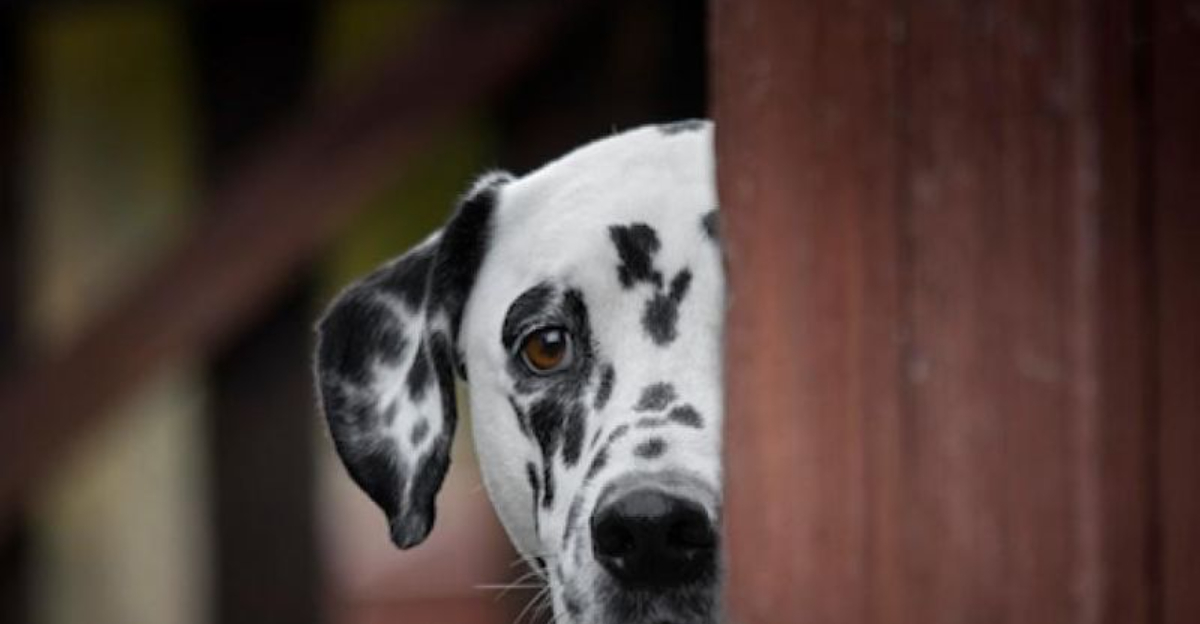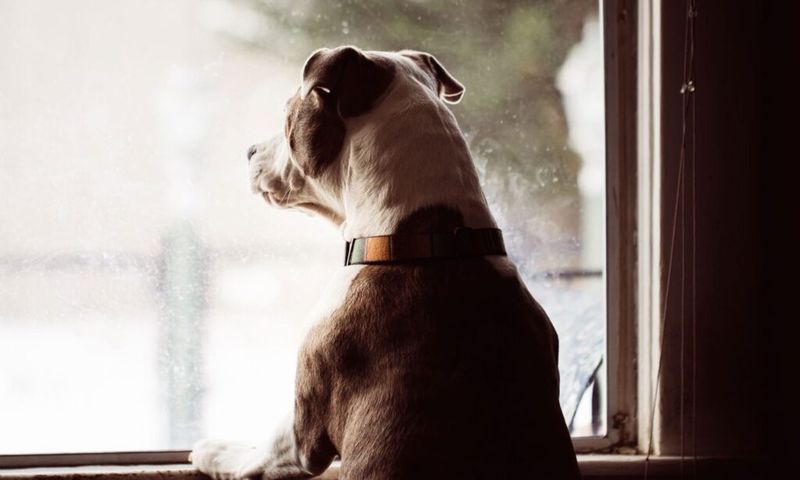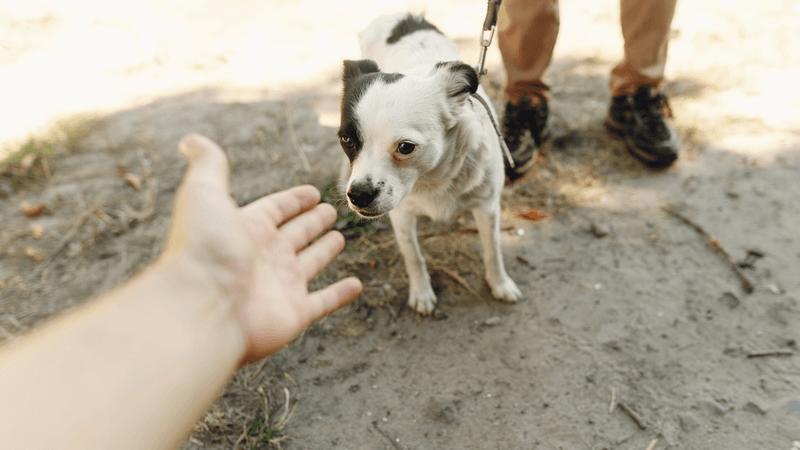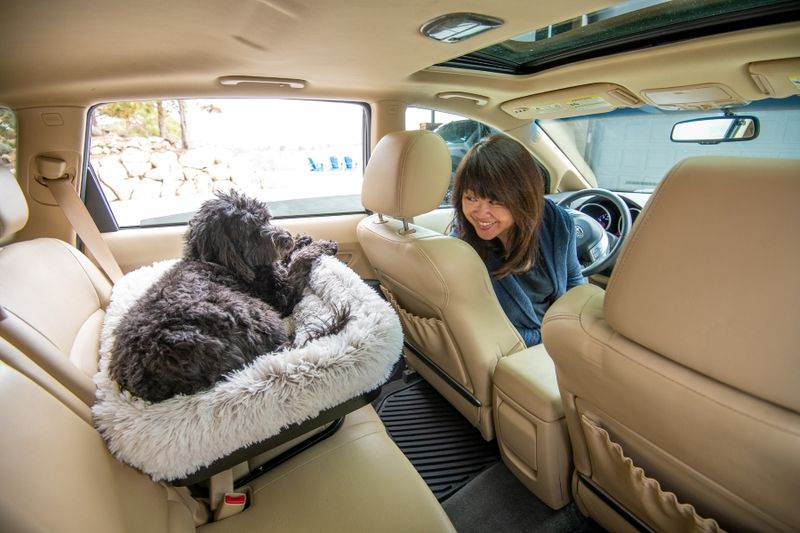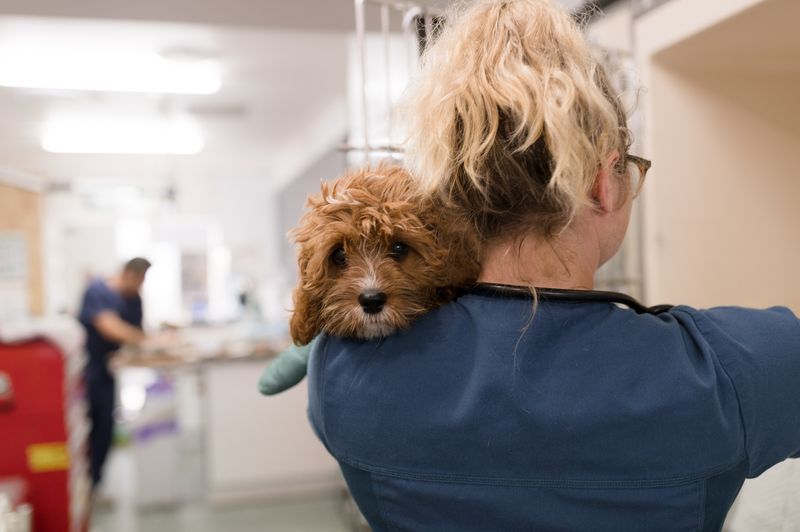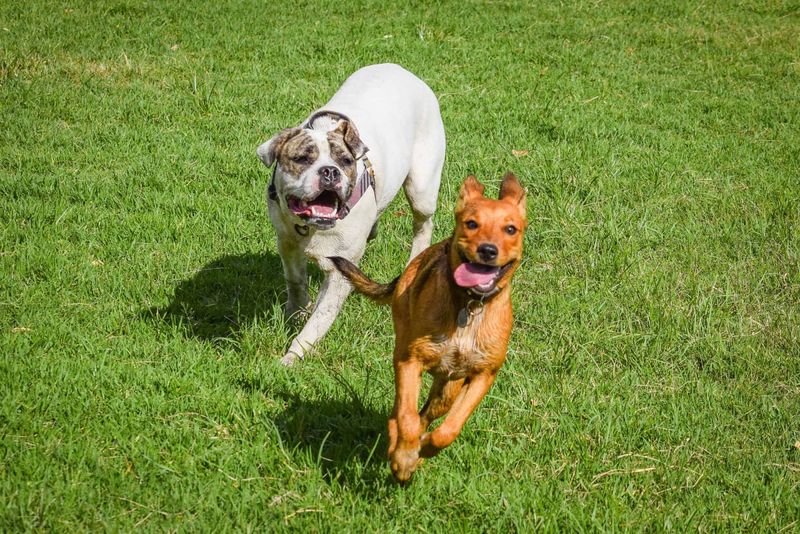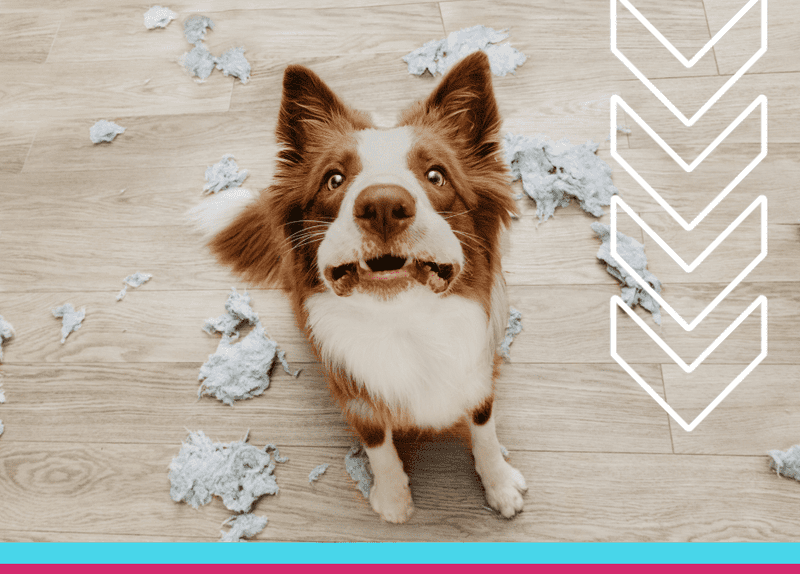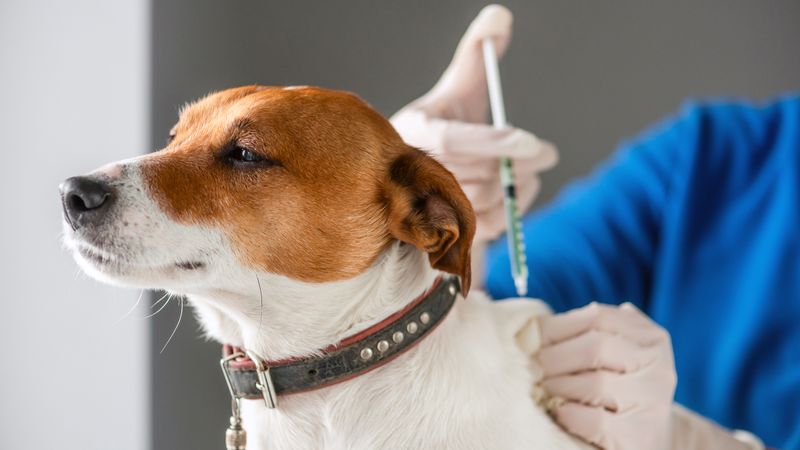Dogs, like humans, can experience anxiety due to various triggers. Understanding these triggers and learning how to address them can significantly improve your dog’s well-being. This guide explores 11 common causes of anxiety in dogs and offers practical solutions to help your furry friend maintain a calm and happy demeanor.
Loud Noises
Picture this: a sudden clap of thunder sends your dog diving under the couch. Loud noises like thunderstorms or fireworks can be terrifying for dogs. The unpredictability and intensity can trigger anxiety, leaving them trembling and panting.
To help your dog cope, create a safe haven by providing a quiet space with familiar items like a favorite blanket. Try playing calming music to drown out the noise. Consider a thunder shirt; these snug vests can provide comfort and reassure your anxious pet. Conditioning them to noises gradually might also ease their fear.
Separation Anxiety
Ever notice your dog pacing or whining as you head out the door? Separation anxiety is a common issue where dogs feel distressed when left alone. They might bark excessively or even destroy furniture in their panic.
To alleviate this, start by leaving them alone for short periods and gradually increase the duration. Providing stimulating toys or leaving the TV on can offer distraction. Training them to feel secure when you’re not around is key to reducing their anxiety.
New Environments
For some dogs, a new environment can be overwhelming, much like moving to a new city for humans. The unfamiliar scents and sights can induce stress.
Help them adjust by introducing new places gradually. Allow them to explore at their own pace while offering plenty of encouragement. Familiar items like a favorite toy can provide comfort. With time, they might even look forward to new adventures.
Strangers
Imagine meeting a giant who towers over you—intimidating, right? Dogs often feel this way around strangers. This fear can lead to anxiety and protective behavior.
Introduce strangers slowly and in controlled environments. Allow your dog to approach in their own time. Reward calm behavior with treats and praise. Building positive associations with new people will help your dog feel more secure.
Other Animals
Meeting other animals can be a daunting experience for some dogs, causing anxiety or aggression. Whether it’s another dog or a different species, the interaction is often unpredictable.
To ease this anxiety, ensure introductions are gradual and in neutral settings. Keep initial meetings short and positive, using treats and affection to reinforce calm behavior. Over time, with repeated positive experiences, your dog’s confidence in social interactions will grow.
Travel
Road trips can be exhilarating for some but nerve-wracking for others. The motion, confinement, and unfamiliar scenery can unsettle dogs.
If your dog exhibits travel anxiety, try short car rides to begin with, slowly extending the length as they acclimate. A secure crate can provide a sense of safety, and familiar toys or blankets can be comforting. Ensuring your dog is well-exercised before travel can also help reduce anxiety.
Veterinary Visits
For many dogs, a trip to the vet is synonymous with stress, filled with strange smells and unfamiliar hands.
To make vet visits less traumatic, practice gentle handling of your dog’s paws and ears at home. Regular, non-medical visits to the clinic can help them associate the place with positivity. Treats and affection during and after the visit can also help lessen their anxiety.
Lack of Physical Exercise
A bored dog is often an anxious dog. Without sufficient exercise, pent-up energy can manifest as anxiety.
Daily walks and playtime are essential for your dog’s mental and physical well-being. Engaging toys and activities that stimulate both mind and body can help reduce anxiety. A well-exercised dog is generally more relaxed and happier, making regular activity crucial.
Changes in Routine
Dogs thrive on routine. Significant changes, such as a move or a change in family dynamics, can disrupt their sense of security.
Consistency is key. Maintain feeding, walking, and play schedules even amidst change. Familiar items and environments can provide comfort. Gradually introduce new routines to ease their transition and reduce anxiety.
Past Trauma
Rescue dogs or pets with unknown histories may carry the weight of past trauma. Loud noises, sudden movements, or unfamiliar situations can trigger anxiety.
Patience and understanding are vital. Creating a safe, predictable environment helps them feel secure. Positive reinforcement and professional training can aid in building trust and confidence.
Medical Issues
Sometimes, anxiety is a symptom of underlying medical issues. Pain or illness can leave a dog feeling vulnerable and distressed.
Regular vet check-ups are essential to rule out health problems. Observing changes in behavior or appetite can provide clues to their anxiety. Addressing medical issues promptly can help restore their peace of mind.
